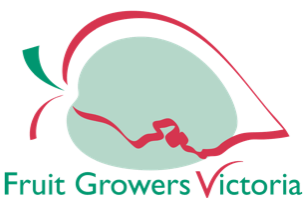This festive season we will be closed from 12 noon Friday 24th of December 2024, reopening on Thursday 2nd January 2025. Seasons Greetings everyone!

Hole preparation
Dig a wide, shallow hole twice the diameter of the pot but with the same depth of the pot. The hole should not be deeper than the rootball. To allow good root penetration, rough up the sides and the bottom of the hole and remove any glazing on the side of the hole. This last point is very important for both drainage and root penetration.

Digging the hole is only the start!
Tree Preparation
The root ball needs to be moist (not wet) prior to removing from the container. Gently tap the sides of the pot and carefully remove the tree from its container. Don’t pull and reef at the trunk. Matted roots on the bottom and sides of the root ball should be shaved off with a spade or knife. Doing this removes any chance of root girdling. At this time also remove any damaged roots and branches.

Shave off texturous roots from the sides and bottom
Planting
Place the tree carefully in the middle of the hole. Check that the root ball surface is level with the surrounding ground surface. If it is low, remove the root ball and backfill the hole until it reaches the required planting height. We recommend adding an additive to the back fill soil. We suggest a mixture of wetting agent, fertiliser, water crystals and organic matter at a rate of 1lt per 100lt of hole. Speciality Trees has developed 'Complete Tree Starter' specifically for this purpose. We also recommend using the same soil for backfill that was dug from the hole.

It's a good idea to add additive to the backfill
Watering
Use any excess backfill soil effectively to create a water-well or basin around the tree which will ensure watering reaches the full diameter of the root ball. Fill this basin with water. Allow to drain, and fill again. This ensures thorough watering of the tree as well as the consolidation of the backfill.

Create a basin to fill with water later
Mulching
Spread organic mulch over the root ball, within the basin and over the mound to a depth of 75mm. Ensure that there is no contact between the mulch and the trunk as this can cause serious disease issues. We suggest using a premium mulch with the ability to break down over time.

Keep mulch away from the trunk of the tree
Staking
If the tree is to be staked, two or three wooden stakes (3 is preferred) should be driven into the ground around the tree but outside the perimeter of the root ball. For tying, use soft flexible material such as jute webbing strips. The stakes should be removed after 6-9 months. Three stakes ensures the tree can move in the wind without restriction from any direction.

3 stakes is preferred for stable but unrestricted movement
Irrigation
Irrigation is important after planting and for at least the first summer. If using drip irrigation make sure there are at least two drippers over the root ball. We suggest weaning the tree off water and not just stopping cold turkey so the tree learns to be self reliant.

Irrigation particularly through the first summer is very important
Maintenance
It is recommended that the root ball be kept moist for the first summer season so that roots can re-establish. This is especially critical during summer. Keep water up by watering directly into the basin over the root ball rather than around the root ball. Take care as over watering is often a more serious problem than under watering.
To understand how much water your tree needs, carefully monitor the dissipation rate of the water once the basin is full. If the water absorbs into the soil quickly, it is a sign that the tree may be dry and therefore worthy of another water. Repeat this process.
If the water pools in the basin and takes some time to dissipate into the soil, it is a sign that the soil is sufficiently wet.

Fill the basin well - twice straight after planting
Receive all the latest news, product information, collections, projects, tips and special offers straight to your inbox each month or so.
Receive all the latest news, product information, collections, projects, tips and special offers straight to your inbox each month or so.
Treefinder can help you identify the perfect tree for your next project!
With over 400 tree varieties for review, the Treefinder app enables you to conveniently browse and compile a list of trees suitable for a number of common landscaping uses - from attracting birds to creating a formal screen or hedge. By selecting desired size, foliage, and a few categories, Treefinder opens up a world of possibilities.
Once you've found the perfect tree you can click through to our website for more information, availability and a quote.

We are specialists in the environmentally sustainable production of premium quality advanced landscaping trees and screens.
For more than 47 years Speciality Trees has been a leader in the production and supply of advanced environmentally sustainable, containerised landscape trees for local government, the landscaping industry and retailers.
Learn more







